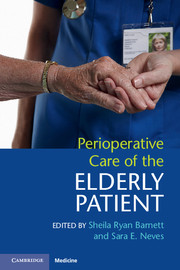Section 2 - General Health and Illness
Published online by Cambridge University Press: 06 January 2018
- Type
- Chapter
- Information
- Perioperative Care of the Elderly Patient , pp. 25 - 98Publisher: Cambridge University PressPrint publication year: 2018



